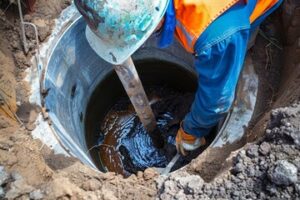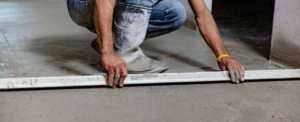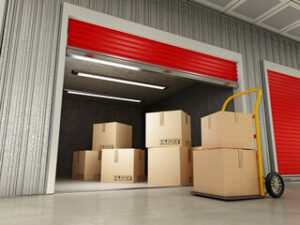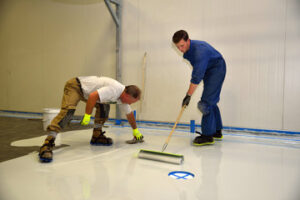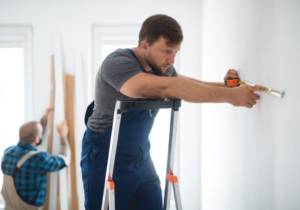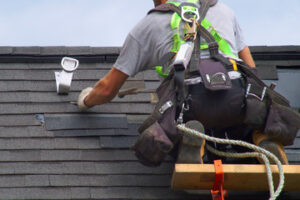Estate Auctions Springfield, MO are a great way to convert items into cash quickly. These events can be a time-consuming process, but professional companies take much of the stress out of the process by handling everything from organizing and displaying goods to advertising and managing transactions.
They can also help establish price lists based on market value and provide a competitive bidding process that leads to higher sales. This can save a lot of time and money for beneficiaries.

Whether you are clearing out the belongings of a deceased loved one, downsizing to a smaller home, or simply getting rid of clutter, estate sales offer a convenient way to convert unwanted items into cash. However, it is important to understand the basics of estate sales before attending one. Estate sales are usually run by professional companies who specialize in organizing the sale. Unlike retail and consignment sales, estate auctions feature a more streamlined process and the potential for a higher profit. This is especially true if the home contains rare or valuable items.
The first thing to remember when shopping at an estate sale is that you should be prepared for sticker shock. While many items are less expensive than traditional thrift stores and yard sales, some may be considerably more. If you are looking for a bargain, it is best to visit the estate sale on its last day. Many times, the prices are reduced by 50% to 60%. It is also wise to bring a container for your purchases and have bags or boxes handy, as some estate sales don’t provide these things.
In addition to allowing homeowners to get rid of unwanted items, estate sales provide an opportunity for families to find a good home for sentimental items. These items are often the result of a recent death or family member’s divorce, and they have special meaning to the people who are selling them.
It’s also important to keep in mind that estate sales are usually held at someone else’s home, so it’s a good idea to be respectful of the space. This includes not bringing dogs or food into the house, and being respectful of other shoppers. In addition, it’s a good idea to avoid haggling, as it can be uncomfortable for the sellers and their family members.
It’s also a good idea to photograph each item before the estate sale begins. This will allow heirs to easily determine what they want to keep and what can be sold. It’s also a great way to document the items and their condition. Also, if you’re unsure about the value of an item, ask the estate sale company to set a reserve price on it. This will protect the seller from selling items below market value.
They are a great way to make money
Estate sales are an excellent opportunity to make money. However, it is important to understand the complexities of these sales before you attend one. Most estate sale managers will have their items appraised before the sale to determine how much they are worth. The items will then be priced based on the market in that area. This means that an item that may fetch high prices in a quaint New England town might be considered a throwaway in Florida. The price of an item will also depend on the condition of the item and its rarity.
An estate sale is a great place to score unique and valuable items at affordable prices. Many of the items sold at an estate sale have a personal connection with their owners, adding sentimental value to the items being sold. In addition, they often come with a history of use or abuse, which adds to their charm and value.
Estate sale shoppers can expect to find a wide range of items, including vintage and antique collectibles, household essentials, unique curiosities, specialized goods, and craft supplies. This variety provides buyers with opportunities to discover valuable finds that will enrich their homes and lives.
Another benefit of estate auctions is that buyers can negotiate prices. Depending on the policy of the estate sale, this can be beneficial to buyers. However, be aware that some estate sales will only allow a set price and will not entertain negotiations.
When shopping at an estate sale, it is important to arrive early to get the best deals. Many estate sales operate on a first-come, first-serve basis, and the first people to arrive will be allowed into the house. Those who arrive later will likely have to wait in line, and this can be frustrating.
For those looking for a more convenient way to shop, online estate sales are an excellent option. Online estate sales offer a wide range of items and allow you to bid on items from the comfort of your home or office. Unlike physical estate sales, online auctions are easy to navigate and can be a great source of inspiration for your next DIY project.
They are a great way to get rid of items quickly
Estate auctions are a great way to get rid of items that you no longer need, whether you’re downsizing for a move or settling the estate of a loved one. In addition to clearing out clutter, estate sales can also generate cash for the owner. While there are some drawbacks to estate sales, such as the potential for a lengthy sale cycle and the need to present items to an auctioneer, they can be a lucrative option for those who want to convert their possessions into cash quickly.
Unlike retail or consignment sales, estate auctions offer the opportunity for buyers to engage in competitive bidding. This often results in higher prices for the seller and helps ensure that items are sold at a fair market value. In addition, estate sales typically last for several days, allowing buyers to browse and purchase a variety of items at their leisure.
The first step in preparing for an estate sale is inventorying all of the items that will be offered for sale. This will help you keep track of each item and determine its price range. It will also help you plan the layout of your sale and determine how much space is needed to display your items. Once you’ve completed this step, it’s time to start marketing your estate sale!
Many people who attend estate sales are looking for unique or unusual items. These items can range from vintage and antique collectibles to household essentials. Additionally, you can find specialized goods, such as tools or outdoor equipment. You may even be able to find craft supplies and decor that can enhance creative projects.
Another benefit of estate sales is that they provide a convenient way to clear out space in your home. Whether you’re moving to a new home or simply need to declutter, estate sales are an ideal way to make room for new items and free up valuable space in your home. Additionally, estate sales can be a good source of revenue, as rare or valuable items can fetch a high price.
While it is possible to host an estate sale on your own, hiring a professional company can save you time and reduce the stress of planning. A reputable company will also have the resources to promote your estate sale to a wide audience, which will increase your chances of selling more items. Additionally, estate sale experts will know how to properly display items for sale, so they are more appealing to prospective buyers.
They are a great way to get rid of items that are valuable
Estate auctions are a great way to get rid of items that are valuable and convert them into cash. They offer a convenient, full-service solution to liquidate assets and can provide a higher return on investment than retail or consignment sales. They also allow you to reach a broader audience by selling items online. In addition, they provide an opportunity to find rare or unique items that are not available elsewhere. It can be difficult to decide what to do with personal belongings, especially when they have emotional or financial value. Estate sales can help you sort through these items and determine which ones are worth preserving for family members and which should be sold or donated.
Professional estate sale companies are experts in appraising and organizing items, pricing them based on market value, and marketing the event to attract potential buyers. This ensures a high return on investment for sellers and a successful outcome for shoppers. It is also important to hire a professional to manage the entire process, as it can be stressful and time consuming.
Organizing an estate sale is an excellent way to declutter your home and clear out space for new items. This is especially useful if you’re downsizing for a move or preparing for retirement. Alternatively, you can use the sale to turn your collection of antiques into a profitable business.
While many people mistakenly believe that estate sales are exclusive to the rich, they actually provide an excellent opportunity to buy high-end goods at a fraction of the price. Estate sales are often triggered by negative events, such as death or relocation, but they can also occur for other reasons.
While haggling is a normal part of estate sales, it’s important to be tactful and keep in mind that the items being sold may have sentimental value for the sellers or their family. In addition, it is often best to avoid arguing over prices with family members, as this can be hurtful and lead to an uncomfortable experience. Lastly, be sure to sign up for email lists, follow estate sale companies on social media, and take advantage of the internet to find the latest news about upcoming sales.
